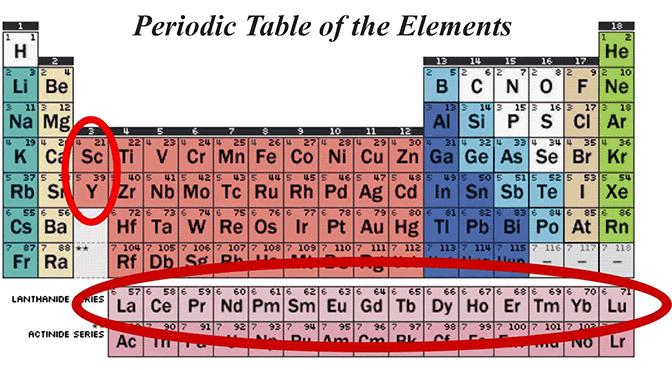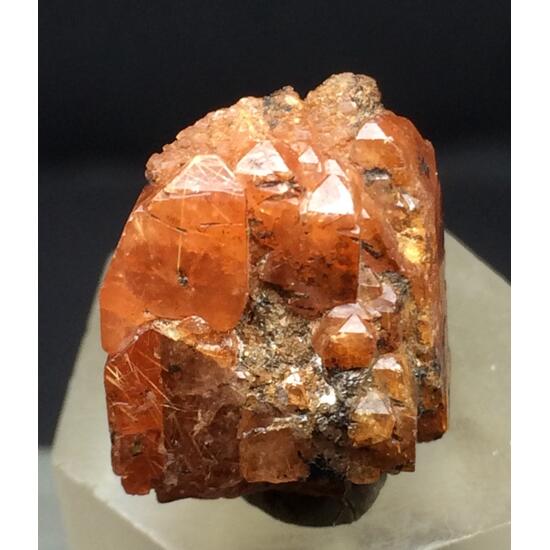About Rare Earths
Sunday, July 21, 2019
Friday, July 19, 2019
Not so rare there.......
Australia - Brazil - Burundi - Canada - China - Finland - France - Greenland - India - Japan - Malawi - Myanmar - Namibia - Norway - Russia - South Africa - Spain & Portugal - Sweden - Tanzania - Thailand - Turkey - UK & Ireland - USA - Vietnam
Yttrium Lasers, TV and computer displays
Lanthanum Oil refineries, hybrid-car batteries, camera lenses
Cerium Catalytic converters, oil refining, glass-lense production
Praseodymium Aircraft engines, carbon arc lights
Neodymium Computer hard drives, cell phones, high-power magnets
Promethium Portable x-ray machines, nuclear batteries
Samarium High-power magnets, ethanol, PCB cleansers
Europium TV and computer displays, lasers, optical electronics
Gadolinium Cancer therapy, MRI contrast agent
Terbium Solid-state electronics, sonar systems
Dysprosium Lasers, nuclear-reactor control rods, high-power magnets
Holmium High-power magnets, lasers
Erbium Fiber optics, nuclear-reactor control rods
Ytterbium Portable x-ray machines, lasers
Lutetium Chemical processing, LED light bulbs
During June 2019 prices of dysprosium metal reached their highest level since June 2015 at $292 per kg and the price of neodymium metal rose to its highest level since July 2018 at $63 a kg
Lutetium Chemical processing, LED light bulbs
During June 2019 prices of dysprosium metal reached their highest level since June 2015 at $292 per kg and the price of neodymium metal rose to its highest level since July 2018 at $63 a kg
The rare earth elements are defined as a group of chemical elements composed of scandium, yttrium, and the lanthanides. The lanthanides are a group of 15 chemically similar elements. Although not a lanthanide, yttrium is included in the rare earths because it often occurs with them in nature, having similar chemical properties. Scandium is also included in the group, although it typically occurs in rare earth ores only in minor amounts because of its smaller atomic and ionic size.
The
elements range in crustal abundance from cerium, the 25th most
abundant element of the 78 common elements in the Earth's crust, at
an estimated 46 parts per million, to europium and erbium, the least
abundant rare earth elements, at
about 0.5 and 0.4 parts per million respectively. Rare
earth elements (REE) are widely distributed in low concentrations (10
to 300 ppm) in shales, granites, alkaline rocks and carbonatites.
Source:
International Business Times - Reuters Photo / David Becker
Significant
quantities of rare earths are also recovered from the mineral
monazite. xenotime and ion-adsorption clays and account for a much
smaller part of the total production, but are important sources of
yttrium and other heavy-group rare earths.
Monazite
(Ce,La,Nd,Th)PO4)
Xenotime
(YPO4)
Bastnaesite
is found in deposits such as Bayan Obo (China) and Mountain Pass
(USA) and contains low concentrations of thorium and uranium.
Deposits of Mt. Weld (Australia) as well as the placer deposits in
Brazil and India are typical deposits with monazite as the main RE
mineral. Monazite yields the highest value of the toxic element
thorium with approximately 27 wt-%. Both minerals gain the highest
grades in REO. Contrary to bastnasite and monazite, xenotime is
typical of deposite such as Lofdal (Namibia) or Browns Range (Australia). It yields average values of thorium (approx. 8.4 wt-%)
and the highest values of uranium (approx. 5.8 wt-%).
References
Moss, R. L., Tzimas, E., Kara, H., Willis, P., & Kooroshy, J. (2011). Critical metals in strategic energy technologies. JRC scientific and technical reports, doi: JRC 65592. Retrieved from http://setis.ec.europa.eu/newsroom-items-folder/jrc-report-on-criticalmetals-in-strategic-energy-technologies/at_download/Document
-
RE: Rare earth
-
REE: Rare earth element
-
REM: Rare earth metal
-
REO: Rare earth oxide
-
TREO Total rare earth oxides
-
REY: Rare earth element and yttrium
-
LREE: Light rare earth elements
-
MREE: Middle rare earth elements
-
HREE: Heavy rare earth elements
Abbreviations
References
Alonso,
E., Sherman, A. M., Wallington, T. J., Everson, M. P., Field, F. R.,
Roth, R., & Kirchain, R. E. (2012). Evaluating rare earth element
availability: A
case with revolutionary demand from clean technologies. Environmental
science and technology, 46, 3406-3414. Retrieved from
http://pubs.acs.org/doi/pdf/10.1021/es203518d
Hatch,
G. P. (2012, October). Dynamics in the global market for rare earths.
Elements,
8, Retrieved from http://elements.geoscienceworld.org/content/8/5/341
Humphries,
M. Congressional Research Service, (2012). Rare earth elements: The
global supply chain
(R41347). Retrieved from Congressional Research Service website:
http://www.fas.org/sgp/crs/natsec/R41347.pdf
Louwerse, D: RARE EARTH ELEMENT DEPOSITS AND OCCURRENCES WITHIN BRAZIL AND INDIA.
Louwerse, D: RARE EARTH ELEMENT DEPOSITS AND OCCURRENCES WITHIN BRAZIL AND INDIA.
Moss, R. L., Tzimas, E., Kara, H., Willis, P., & Kooroshy, J. (2011). Critical metals in strategic energy technologies. JRC scientific and technical reports, doi: JRC 65592. Retrieved from http://setis.ec.europa.eu/newsroom-items-folder/jrc-report-on-criticalmetals-in-strategic-energy-technologies/at_download/Document
Onstad,
E. (2012, September 19). Analysis: Rare earth prices to erode on
fresh supply,
China
.
Reuters. Retrieved from
http://www.reuters.com/article/2012/09/19/us-rareearths-outlook-idUSBRE88I0O020120919
Pires,
F., Miano, S: REE in Brazil – condition of formation and types of
deposits
U.S.
Department of Energy, (2012). Critical materials strategy
(DOE/PI-0009). Retrieved from website:
http://energy.gov/sites/prod/files/DOE_CMS2011_FINAL_Full.pdf
U.S.
Geologic Survey. Minerals Information.
USGS Minerals. Web. 18 Nov. 2012. <http://minerals.usgs.gov/minerals
Zhou,
Baolu; Li, Zhongxue; Chen, Congcong (25 October 2017).
"Global
Potential of Rare Earth Resources and Rare Earth Demand from Clean
Technologies". Minerals. 7
Subscribe to:
Posts (Atom)


